Research - Core Drilling Method
Contact Us
RBS 2002
3900 University Blvd.
Tyler, TX 75799
Office Hours:
M-F 8 a.m. - 5 p.m.
800 UT TYLER
Ph: 903.566.7273
Fx: 903.566.7337
ce@uttyler.edu
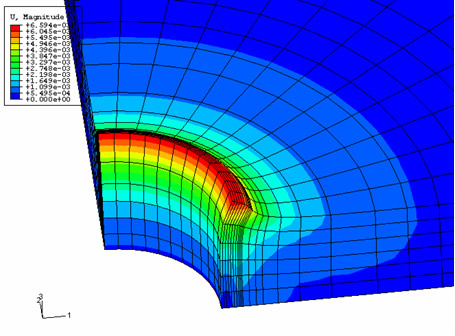
Displacements around a core hole that has been exposed to water as part of the drilling
process
(the swelling that occurs in the vicinity of the hole is caused by water absorption)
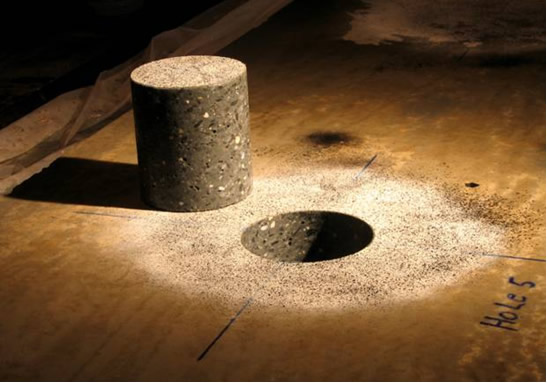
Photograph of a concrete plate and associated core after coring
(visible is the pattern applied as part of the digital image correlation process)
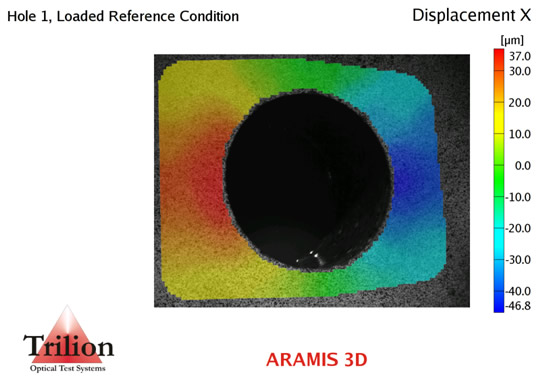
Displacement output from third-party vendor digital image correlation software during
a core-drilling method test.
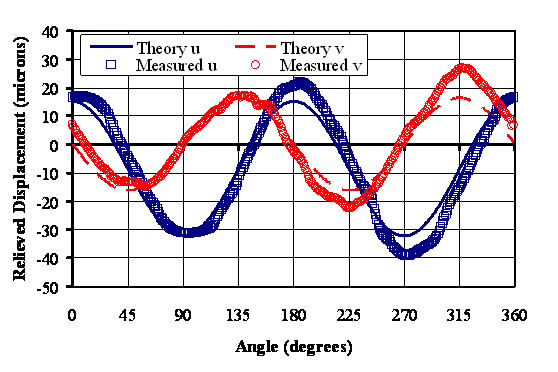
Plot of displacements measured around a core hole during an experimental test.
Displacements were measured with digital image correlation
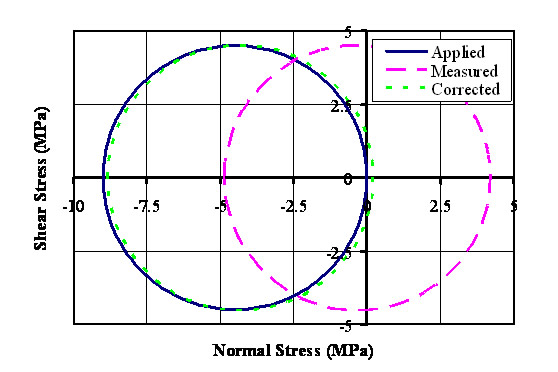
Mohr's Circle plot of experimental results showing the need for correction to stresses
measured and the effectiveness of the proposed correction. In this case the results
were distorted due to water absorption during the test.
Contact Us
RBS 2002
3900 University Blvd.
Tyler, TX 75799
Office Hours:
M-F 8 a.m. - 5 p.m.
800 UT TYLER
Ph: 903.566.7273
Fx: 903.566.7337
ce@uttyler.edu